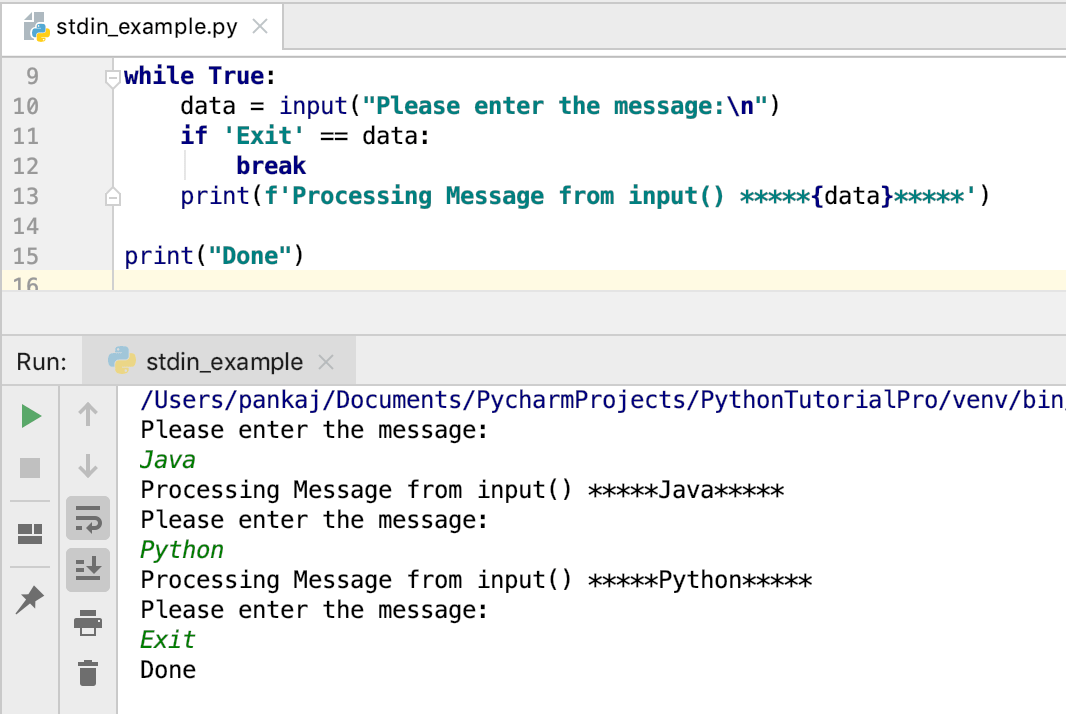Using sys.stdin to read from standard input. If you just want to read or write one file see open (). In this article, we’ll look at two ways to read from standard input in python and discuss their differences. Web in python, the readlines () method reads the entire stream, and then splits it up at the newline character and creates a list of each line. 11 python code examples are found related to read stdin.
2 a b 3 d e f now i would like to first read the number using n= sys.stdin.readline() and then read the next n lines using. Web there are three ways to read data from stdin in python. Web in python, you can access stdin through the sys.stdin object, which behaves like a file object. Import sys for line in sys.stdin: Web consider the stdin has the following entries:
Web read input from stdin in python using fileinput.input() if we want to read more than one file at a time, we use fileinput.input(). Import sys for line in sys.stdin: Web this module implements a helper class and functions to quickly write a loop over standard input or a list of files. Web python programs can read from unix pipelines. Web python read from stdin with arguments ask question asked 9 years, 4 months ago modified 4 years, 11 months ago viewed 6k times 2 i want to read from.
Here is a simple example how to read from stdin: Web there are three ways to read data from stdin in python. Print (input ()) except eoferror: You need some way of passing the current tty path to the script. Sys.stdout.write (sys.stdin.read ()) <<strong> stdindemo.py</strong> try: Import sys, os tty_path = os.environ ['tty']. Web consider the stdin has the following entries: Web what's the best way to tell if a python program has anything to read from stdin? Via sys.stdin to read from standard input the interpreter uses the python sys module stdin as standard input. Ask question asked 14 years, 7 months ago modified 14 years, 7 months ago. Print (line) be aware that sys.stdin is a stream. 2 a b 3 d e f now i would like to first read the number using n= sys.stdin.readline() and then read the next n lines using. Line two should be the. If you just want to read or write one file see open (). Web import sys stdin_fileno = sys.stdin # keeps reading from stdin and quits only if the word 'exit' is there # this loop, by default does not terminate, since stdin is.
You Can Vote Up The Ones You Like Or Vote Down The Ones You Don't Like, And Go To The Original.
Print (line) be aware that sys.stdin is a stream. 2 a b 3 d e f now i would like to first read the number using n= sys.stdin.readline() and then read the next n lines using. Via sys.stdin to read from standard input the interpreter uses the python sys module stdin as standard input. 11 python code examples are found related to read stdin.
Web In Python, You Can Access Stdin Through The Sys.stdin Object, Which Behaves Like A File Object.
You need some way of passing the current tty path to the script. Sys.stdout.write (sys.stdin.read ()) < stdindemo.py try: Using sys.stdin to read from standard input. This means you can use methods like read(), readline(), and readlines().
There Are Two Ways To Use.
The file should have two lines. Line one should be the letter count of the string. Web there are three ways to read data from stdin in python. Let's look at how to use these.
In This Article, We’ll Look At Two Ways To Read From Standard Input In Python And Discuss Their Differences.
Print (input ()) except eoferror: Web what's the best way to tell if a python program has anything to read from stdin? Web in python, reading from stdin is quite simple. Import sys, os tty_path = os.environ ['tty'].
![How to Read from stdin in Python With Examples [Latest] All Learning](https://i2.wp.com/all-learning.com/wp-content/uploads/2019/08/Python-stdin-Example.png)






